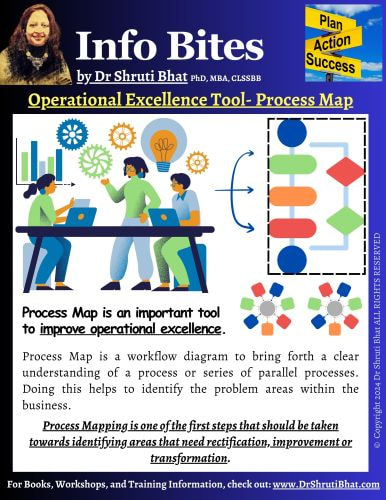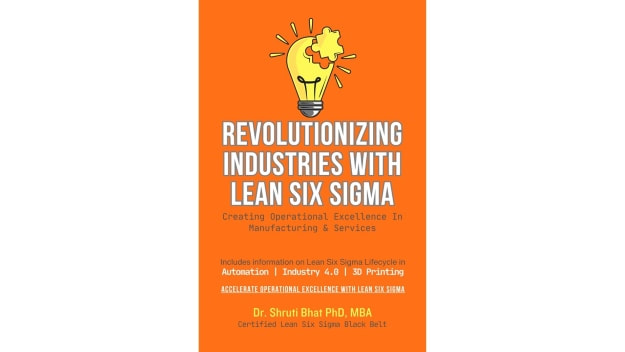Discover how the Kaizen methodology can enhance customer satisfaction through continual incremental improvements. This blogpost delves into the principles of Kaizen, provides an example and a case study of its application in an engineering company (but the learnings can be applied to any industry sector), and offers tips for successful implementation in today's business environment.
Several operational excellence methodologies are known to improve customer satisfaction viz. TQM, Lean Six Sigma, Balanced Score Card, Kaizen etc. In this blogpost, I shall touch upon how to improve customer satisfaction using Kaizen.
Background of Kaizen Methodology:
Kaizen is a Japanese concept that emphasizes continual improvement. It targets the processes and outcomes of a business to anchor it for long-term success. Although Kaizen is present in Japanese folklore for several decades, it was first applied in the corporate sector post-World War II, to improve manufacturing operations of the Japanese companies. It produced significant results for the Toyota Corporation, which led to the philosophy spreading across the world. Now, Kaizen is used by companies in almost all industry sectors.
Kaizen Principles:
Kaizen involves making small incremental improvements in products, services, processes and culture of a company. These incremental changes done consistently, bring-in exponential benefits such as increased profits, saved costs, higher productivity, sales, customer satisfaction etc.
Kaizen for Increasing Customer Satisfaction:
When considering how to improve customer satisfaction with Kaizen implementation, organizations must begin by recognizing the problem and identifying opportunities for improvement.
To do this, they should engage cross-functional personnel in the problem-solving process. Then test the proposed solution(s) in small groups before spreading them across the entire organization. PDCA (Plan-Do-Check-Act) cycle is usually used for Kaizen implementation. The Kaizen campaign must be supported by the company's top leadership and employees. Any resistance must be resolved via improved motivation, employee engagement, counseling and transparent communication. Employees must be encouraged to voice their concerns and also offer suggestions for improvement.
A Kaizen committee should be formed of five to ten employees. This committee should meet weekly to discuss ideas for continual improvement and to monitor the changes made after implementing them.
Tip: To know more about how to initiate Kaizen at your company check out my book on How to Use Kaizen for Increased Profitability and Organizational Excellence. If yours is a pharmaceutical or a biotech setup, check out this book Kaizen for Pharmaceutical, Medical Device and Biotech Industries.
Example of Initiating Kaizen in an Engineering Company:
Let’s take an example of initiating Kaizen in an engineering company to improve customer satisfaction.
Improving customer satisfaction with Kaizen involves continual, incremental changes focused on enhancing product/ service quality and efficiency. By regularly soliciting and incorporating customer feedback, you can identify and address pain points in the customer journey. Additionally, empowering employees to suggest and implement improvements fosters a culture of customer-centric innovation, leading to higher customer (as well as employee) satisfaction levels.
To get started, a Kaizen champion and taskforce must be established. The Kaizen champion will lead the campaign and he/she will report directly to the company's CEO or the management board.
The taskforce should include the Kaizen champion, a manufacturing engineer, a design engineer, a quality engineer and two people from the marketing & sales function. In some cases, the team should also include business partners, customers and suppliers to ensure success.
Tip: Besides the Kaizen champion, the Kaizen sponsor aka process owner should also hold overall responsibility for the results of the Kaizen event. So, before you implement Kaizen in your company, first make sure your stakeholders are willing to make it happen.
The Kaizen taskforce must review the current state of the business, product mix, customer base, complaint records etc. and identify the opportunities for improvement. Also, Gemba Walks must be done periodically. I have a separate blogpost on Gemba Walks; you may check it out here. Also, checkout my blogpost on Dos and Don'ts of Gemba Walks here.
Once opportunities of improvement for increasing customer satisfaction are identified by the taskforce, a Kaizen implementation strategy must be designed as well as the execution roadmap.
Remember, the principles of Kaizen emphasize the 'value' of continual incremental improvements. By implementing Kaizen into the company's culture, it can be permanent.
Tip: Make sure that new hires are trained in the principles of the Kaizen process. Also do refresher training periodically for current employees, so that the changes are sustained for years to come.
Kaizen-ing runs via Kaizen events.
Conducting Kaizen Events:
During Kaizen events, the Kaizen taskforce must meet and work together with people at grassroot levels from the sales and marketing function to come up with potential solution(s) to the problem(s).
These meetings should be centered around a specific problem such as- an increase in product returns, defective products, delayed deliveries etc. Also, the meetings must be held in a physical location within the company- the Gemba; in Japanese Gemba means the actual workplace.
Utilizing Digital Tools:
Conducting Kaizen events in the Gemba, that is the actual workplace, allows for a direct, in-depth understanding of the processes and problems. It facilitates real-time observation and problem-solving, enhancing the relevance and effectiveness of continual improvement strategies.
However, physical presence isn't always feasible, for instance, the process is worked at multiple locations of the company, participants can't/ don't want to travel frequently etc. In such cases, the Kaizen champion must hold meetings at Gemba, that is the primary location where the proposed process (for improvement) is being worked. People close to the process must be physically present at the meeting and other stakeholders, process owners etc. can join the meeting virtually.
Tip: It is a myth that virtual Kaizen meetings are not effective. Utilizing digital tools like video conferencing, shared digital whiteboards, and real-time data sharing platforms, teams can collaborate, analyze, and brainstorm improvements remotely, maintaining the spirit of Kaizen by adapting to modern, flexible work environments.
Kaizen Tools:
There are over hundred useful tools viz. Value stream map, SIPOC diagram, Spaghetti maps etc. which help in identifying areas of improvement, potential solution(s), implementation, monitoring and sustaining the changes. Also, several change management models are helpful in installing Kaizen smoothly and with minimal disruptions to the business activities. Checkout more about change management models in my video series- Organizational change management.
Moreover, two tools are extremely helpful in Kaizen initiative for increasing customer satisfaction- Kaizen board and Taguchi loss function.
- Kaizen board: The Kaizen board is an excellent place to document ideas for improvements. It helps the Kaizen taskforce to track progress, identify issues, and implement solutions in real-time. The board typically displays tasks, goals, and improvements at various stages of completion.
- Taguchi loss function: This is a graphical representation of how an increase in variation within specification limits leads to an exponential increase in customer dissatisfaction.
Along with the Kaizen board, the taskforce often use a template to stay on track to initiate Kaizen in the organization. Using this method, each member of the team contributes towards improving the customer relationship process.
Case Study:
Initiating Kaizen in the above-referred medium-sized engineering company led to remarkable results in various aspects of their operations.
One notable outcome was streamlining the production processes and increasing inventory turns.
The company focused on continuous improvement by involving employees at all levels to identify inefficiencies and propose solutions. As a result, the company saw a 30% reduction in production lead time and a 25% increase in overall productivity.
Quality control improved significantly, with defect rates dropping by 40%.
Additionally, the Kaizen initiative nurtured a culture of collaboration and innovation, leading to enhanced employee engagement and a motivated workforce. These improvements not only boosted the company’s competitive edge but also resulted in substantial cost-savings, higher customer satisfaction and market share.
Adapting Kaizen to Today's Business Environment:
In today's rapidly changing business landscape, integrating Kaizen with digital transformation initiatives can significantly enhance productivity as well as customer satisfaction.
Digital tools and platforms have made it easier for teams to collaborate in real-time, share feedback instantly, and implement changes more swiftly and efficiently. Also, utilizing data analytics to identify customer pain points and employing automation to streamline processes can amplify the benefits of Kaizen.
Additionally, fostering a culture of continuous improvement through regular virtual training sessions and collaborative digital platforms ensures that, all employees are aligned with the Kaizen principles, even in a remote or hybrid work environment.
Embracing sustainable practices within the Kaizen framework is yet another way to stay relevant. Customers today are increasingly conscious of environmental and social issues. Implementing eco-friendly processes and demonstrating a commitment to corporate social responsibility can enhance customer satisfaction.
Furthermore, in an era where customer expectations are higher than ever, Kaizen's emphasis on small, incremental improvements can help businesses stay agile and responsive.
By continually refining processes and products based on real-time customer feedback, companies can better meet customer needs, enhance their experiences, and build stronger, more loyal customer relationships. This proactive approach not only boosts customer satisfaction but also gives businesses a competitive edge in an increasingly dynamic market.
Conclusion:
Besides improving the customer relationship process, Kaizen also improves employee engagement and overall mojo in the organization. With the right approach, your organization can benefit from increased employee morale and productivity. Remember, the benefits of Kaizen extend well beyond improved customer satisfaction!
Are you planning to initiate a Kaizen culture at your workplace? Contact us for more information.
Related reading:
- How to cut costs strategically using Kaizen
- Streamline processes and workflows with Gemba Walk
- Convert business efficiency with Spaghetti models.
- Taguchi loss function.
- How to Use Kaizen for Increased Profitability and Organizational Excellence.
Follow Shruti on Twitter, YouTube, LinkedIn
Keywords and Tags:
#Kaizen #ContinuousImprovement #CustomerExperience #LeanMethodology #BusinessStrategy #ProcessImprovement #EmployeeEngagement #DigitalTransformation #Sustainability #CustomerSatisfaction #ContinualImprovement #OperationalExcellence #PDCACycle #Gembawalks #KaizenEvents #CrossFunctionalTeams #DigitalTransformation #SustainablePractices #Taguchilossfunction #kaizenchampioncertification

























